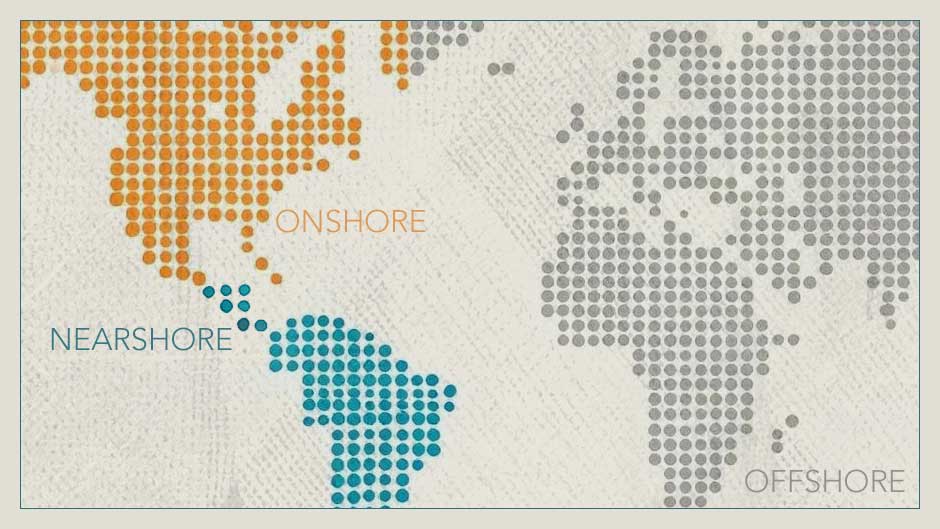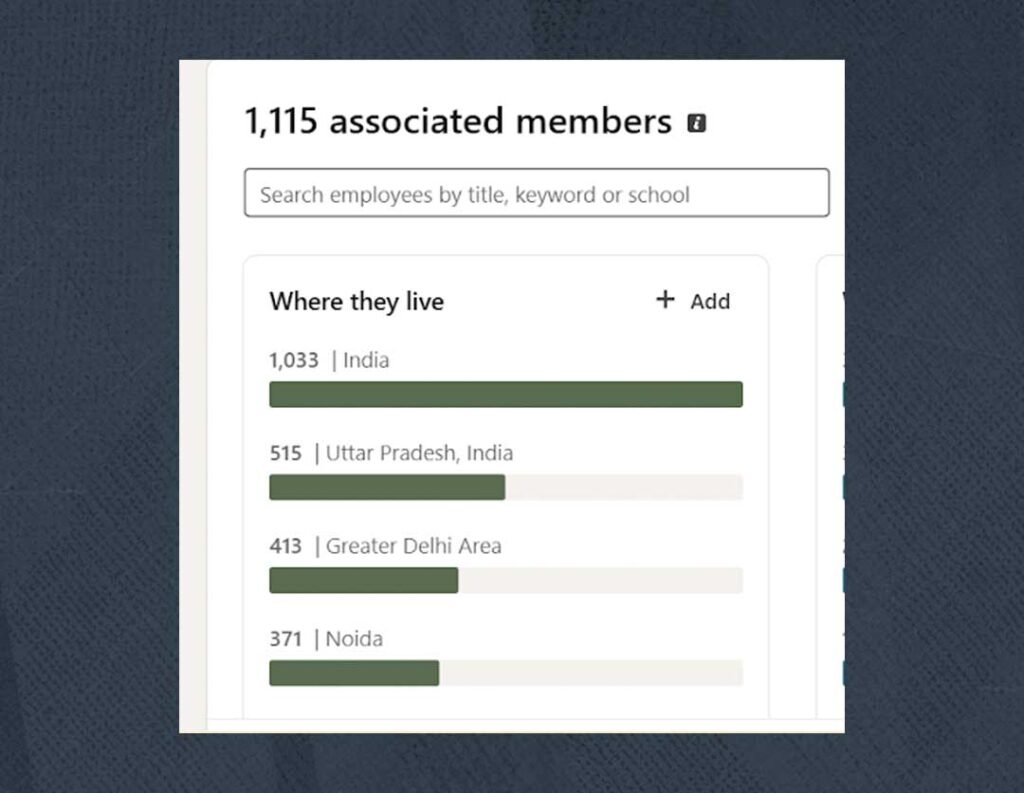Writing for
Good
Insights
In Brief
Discover how hidden friction, communication gaps, and time zone delays quietly inflate the true cost of offshore development.
They say distance makes the heart grow fonder. In EdTech software development, distance mostly makes deadlines slip, product vision blur, and project managers panic.
Like any relationship—be it friendship, romantic, or business—distance tends to bring difficulties. That’s not to say choosing offshore software development is doomed, but proximity does make everything a little easier. When your dev team is 10 time zones away, a “quick fix” can take three days of back-and-forth. That kind of friction isn’t romantic; it’s costly.
With EdTech funding down and companies like 2U and Chegg tightening their belts, how and where you build software matters.

What are the disadvantages of offshore software development?
Offshore savings seem appealing, but they come with hidden costs. These include lost time, communication gaps, and the need for technical rework. Software development today can’t happen in a vacuum. It requires continuous, real-time iteration and feedback loops.
You don’t have to look far to find real-world cautionary tales. The U.S. Air Force’s failed Expeditionary Combat Support System (ECSS) project was a $1.1 billion ERP disaster. It’s a prime example of what can go wrong in any project where there is a communication breakdown, misaligned leadership, and detached contextual development.
No public record confirms that offshore development was involved. However, the project showed signs of being a distant, outsourced build:
- Siloed teams
- Unclear requirements
- Excessive customization
- Cultural and organizational misalignment
The project fell apart after three restructures. It provided no real military capability, even after almost ten years of work.
In the end, it’s a norm to choose offshore development, but cost-cutting doesn’t count if it costs you coherence. In the research Configurations of Global Software Development, distance increases difficulty in communication, trust, and coordination. Cost per hour may be lower offshore. But cost per feature delivered—or delivered on time—is not.


How Nearshore Development Keeps You Aligned, Agile, and On Track
The choice to go offshore is a norm in software development. For many EdTech teams—especially startups or those with few resources—it seems like the only choice. You need to move fast, build lean, and prove traction with limited runway. Offshore vendors offer lower hourly rates, a vast pool of tech talent, and the ability to work around the clock. On paper, it makes sense.
But what starts as a cost-saving move often becomes a context-losing one.
Why Offshore Development Creates Hidden Costs
When your developers are halfway around the world, it’s harder to co-create. You lose the shared context of your users. You lose the nuance of a school administrator’s pain points, the reality of a teacher juggling multiple tech platforms, or the way your product fits into a U.S. school’s existing ecosystem.
That’s the difference between sourcing and strategic co-creation.
Sourcing gets you engineers. Strategic co-creation gives you a team that sees the bigger picture, speaks your language (literally and figuratively), and builds with you. That’s why nearshoring is the best of both worlds.
As Steve Taplin shared on the podcast “Humanity Meets Technology”, seamless collaboration just isn’t possible when you’re passing the baton to a team that’s asleep when you’re at your desk.
Nearshore development emerged in response to farshore limitations. It balances cost with closeness. And nearshore devs can help you co-create products that reflect regional user needs.
Businesses report a 55% boost in communication efficiency with nearshore teams compared to offshore ones.
Deloitte
Global Oursourcing Survey
What Does Nearshore Development Look Like in Practice?
When The NROC Project set out to build EdReady, they were looking for more than an off-the-shelf development team. They needed a partner who could translate a vision into a product that worked for real students and classrooms.
Edify Software Consulting joined the effort early. Together, they built EdReady into a personalized learning platform that helps students identify areas of struggle and focus on the skills they need to strengthen. It’s now used by schools and colleges across the U.S., and the feedback has been consistent.
Edify co-created a tool tailored to different institutions and audiences. It helps administrators with reporting and adapts to what learners need. The partnership continues today—Edify supports platform growth, improves reporting, and enhances data access as EdReady evolves.
When Every Hour Counts
Let’s say there’s a student data breach.
Accelerate Learning gives itself 72 hours to notify schools once a breach is confirmed. But what happens if the breach is discovered on a Friday and your offshore dev team is already offline for the weekend?
That 72-hour window starts to feel less like a safety net and more like a loophole.
In May 2025, Pearson experienced a breach after a GitLab token was left exposed—not for days, but for months. It gave attackers access to source code and cloud infrastructure. The breach was eventually disclosed. While Pearson described the compromised information as “largely legacy data,” reports indicate that the stolen data included customer information, financial records, support tickets, and proprietary source code.
The leak is one thing. How long it went unnoticed is another.
When development is distributed across teams with unclear oversight or limited availability, response time slows. Accountability blurs. And small oversights turn into serious security threats.
Both Pearson and Accelerate Learning are publicly associated with Magic EdTech, a vendor operating a Global Competency Center in India. While the exact scope of those relationships isn’t fully detailed, the offshore delivery model introduces additional complexity—time zones, communication gaps, and blurred lines of accountability. It can turn minor issues into serious risks.

Why More EdTech Companies Are Choosing Co-Creation Over Contracting
Offshore development may promise savings. But when you’re shipping a product that needs to meet real district and classroom needs, you need to account for your needs, too. There’s always a lag with offshore. What you say today gets addressed tomorrow (or later). If you value speed, clarity, and communication, you need a team that works when you do and builds like they’re in the room with you.
Edify Software Consulting is exactly what a nearshore partnership should look like. Based in Costa Rica, we partner with EdTech companies across the U.S. to build and scale products. We offer full-service teams across software development, project management, QA, and DevOps. Time zone proximity makes us nearshore. Precision, speed, and strategic alignment make us a partner.
See how nearshore partnerships like Edify can scale your vision now.
Nearshore vs Offshore Development in EdTech: FAQ
Q: What is nearshore software development?
A: Nearshore development refers to outsourcing software development or other technical services to companies or teams located in countries that are geographically close to your own, often in a similar time zone or with minimal time difference.
Q: Isn’t offshore software development cheaper?
A: On an hourly rate, yes. Offshore teams, often based in places like India or Eastern Europe, usually come in with lower per-hour costs. But what that number doesn’t show you is the friction tax: the time lost to delays, back-and-forths, late-night miscommunications, or work that needs to be redone. In EdTech, where timing and trust are everything, that “cheaper” solution can get expensive fast.
Q: So what’s the benefit of nearshoring, really?
A: Time zone overlap, cultural context, and real-time collaboration. Nearshore teams (typically based in LATAM or Canada for U.S. companies) work when you do, speak your language, and understand your market. That means faster iterations, fewer late-night Slack messages, and less guesswork on what your users actually need.
Q: Is offshore development bad?
A: No, not inherently. EdTech companies need to weigh the risks. Offshore teams can be highly skilled, but without shared working hours, alignment on goals, or deep product context, things can go sideways quickly. And in EdTech, if your product involves student data and school infrastructure, you can’t afford the luxury of lag time.
Q: Doesn’t remote work solve the problems with offshore development anyway?
A: Remote isn’t the same as near. Zoom can’t fix time zone gaps. Slack doesn’t replace shared context. And a 12-hour delay on a production bug is still 12 hours, no matter how many productivity tools you stack on top.
Q: What’s the bottom-line difference between nearshore and offshore?
| Aspect | Nearshore | Offshore |
|---|---|---|
| Time Zone | Similar or overlapping | Significant differences |
| Cultural Alignment | Higher | Lower |
| Communication | Real-time, easier | Delayed, often asynchronous |
| Cost | Moderate savings | Higher savings (on paper) |
| Talent Pool | Skilled, regionally aligned | Vast, globally distributed |
| Travel & Oversight | Easier | More time-consuming/costly |
Q: What kind of dev work can nearshore teams do?
A: Work like MVP builds, or AI and machine learning implementation. Today’s nearshore teams encompass all of development: coding, strategists, architects, QA specialists, and innovation partners. They can build from scratch or plug into your existing systems and help you move faster and smarter without compromising clarity.
Q: What if I just need someone to build and bounce?
A: Then offshore might work if you have airtight specs, no urgency, and don’t mind a bit of drift. But if your team values speed, responsiveness, and shared ownership, nearshore gives you strategic co-creation.